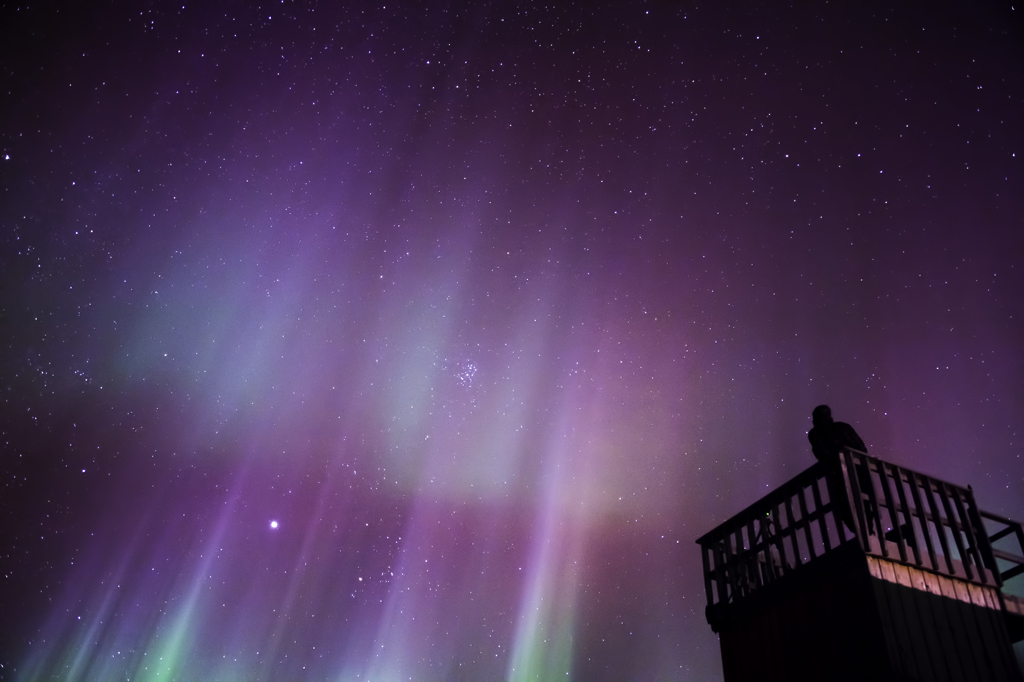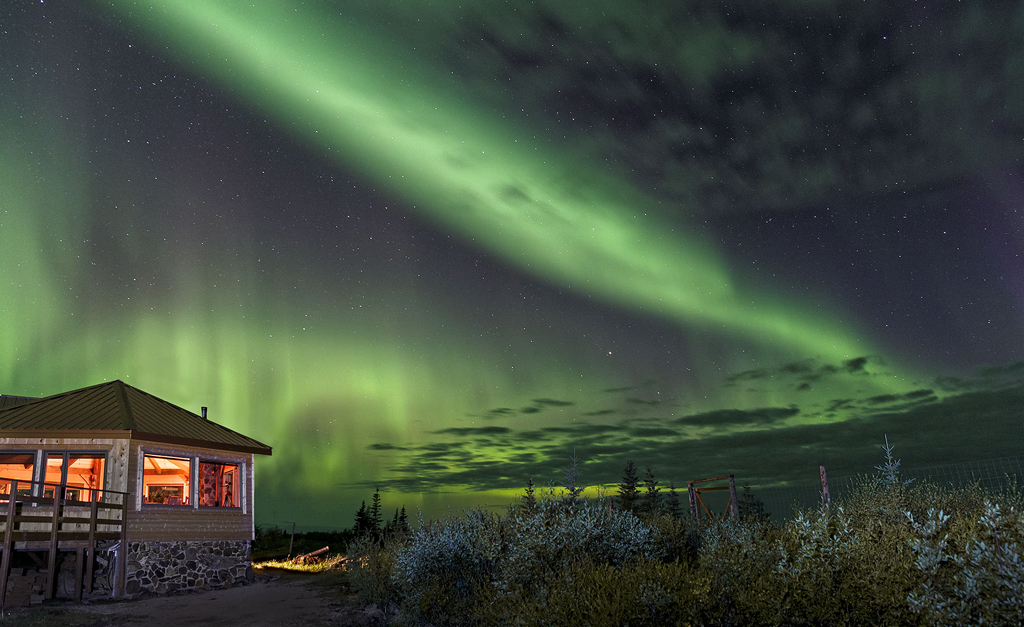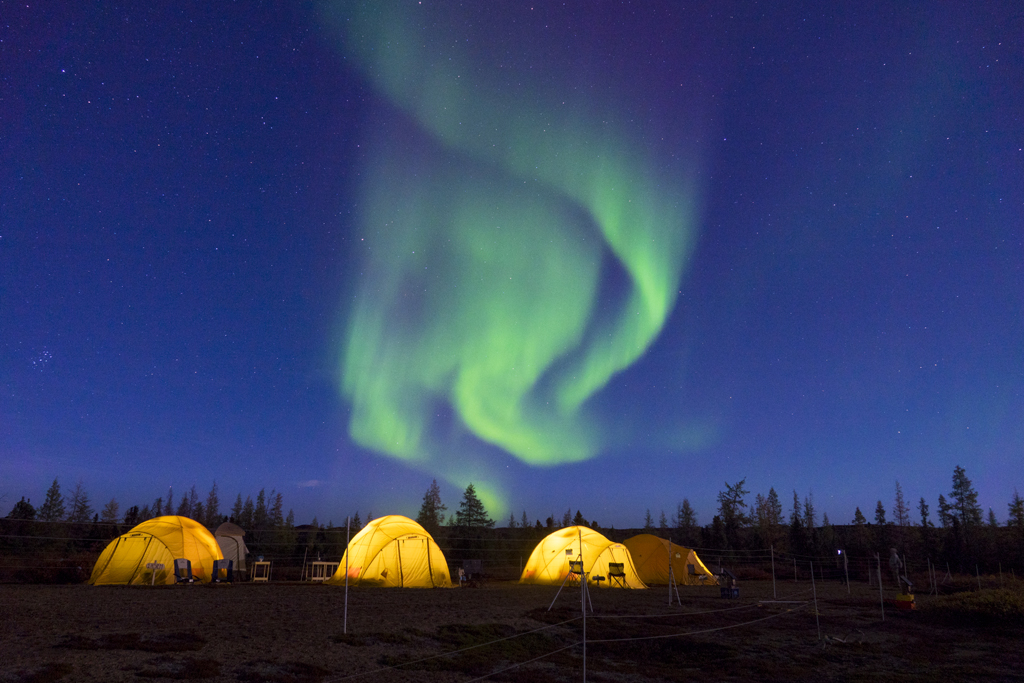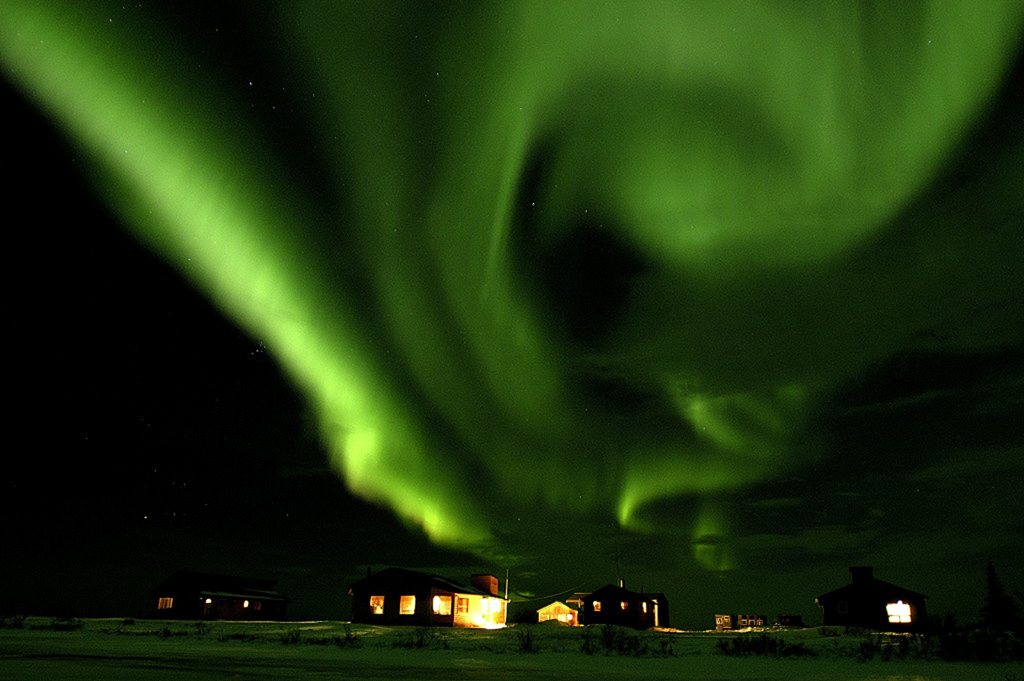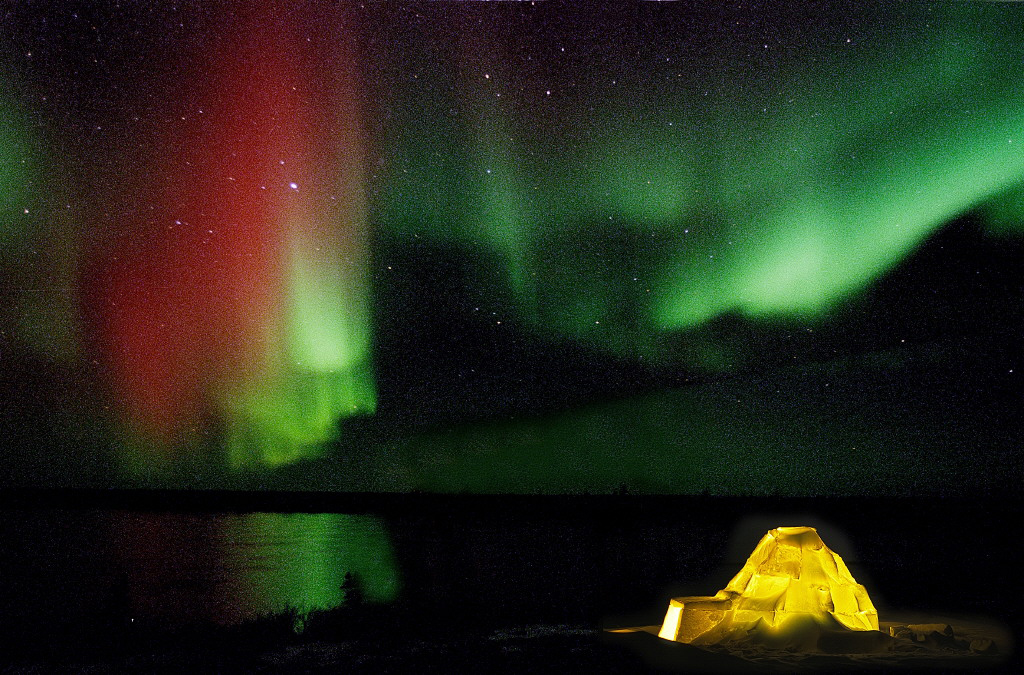by Allison Reimer
I close my eyes and breathe in the frosty clean air as the wind blows off the Hudson Bay. I can hear an Arctic fox tiptoeing through the crisp snow and ptarmigans rustling in the willows. The soft lapping of the waves against the shore comforts me.
I open my eyes and an emerald wind is dancing across the night sky. The stars are winking at me from behind a curtain of lights. I am still, not wanting to breathe, for fear of frightening the northern lights away.
The aurora borealis is as beautiful as its name.
The Greek word “aurora” derives itself from Greek mythology, meaning “goddess of the dawn” and “boreas” means “wind” (Zone). What can be explained by science is difficult to comprehend, when you lay beneath a stream of colours, licking, twisting and swirling their way across the sky. The aurora borealis keeps you in a state of awe as it swells and surges with shades of green, red and purple; often so bright they light up the snow.
Although seemingly celestial, sunspots explain the science behind the phenomenon of the northern lights. When bursts of gasses release from the sun, the energy is carried across space on the solar wind. As the ions glaze over the atmosphere at our magnetic poles, they interact with the oxygen and nitrogen gases in the air, causing the northern lights to form.
The different gases and altitudes create an array of colours across the sky. Oxygen creates red and green, which you see most commonly in the aurora borealis with the naked eye, while nitrogen allows for the pinks and purples to show (Salat). You can see the northern lights throughout the year, but the best viewing often occurs during the winter. The northern lights run on an 11-year cycle, during which they experience a solar maximum and a solar minimum. The aurora experienced a peak year in 2014, at its solar maximum, which can generally last for 2-3 years afterwards (Salat).
The aurora borealis has inspired many legends, and the sight of them even had the power to instill fear in people. Many aboriginal legends say that if you whistle at the northern lights, the spirits of their ancestors will come down and take you away with them. The Inuit believed that the aurora borealis was the spirit of the animals they hunted, which included beluga whales and seals. There have been many more aurora borealis legends around the world and through time, including celestial dragons battling, bad omens, and a wedding party in the heavens (Zone).
It’s not difficult to sense that the northern lights are alive once you’ve seen them, and some people seem to have a gift for hearing them snapping and popping as the aurora moves across the sky. The northern lights take on many different shapes including cones, curtains, arcs and more, and there are many colours in their dance that are indiscernible to the naked eye, but your camera lens can certainly capture them.
The aurora has inspired many adventurers, artists and photographers. There is something soulful about the crunch of snow beneath your boots, the crisp air filling your lungs, and the sky putting on a spectacular light show in a far away place, unchanged by time. When you’re enveloped in the glow of the northern lights, time on earth slows and everything else seems to fade away. More elusive than most wildlife, the aurora borealis is a fleeting friend, but a generous one, as every experience is breathtaking.
A favourite childhood memory of mine was of building snow forts with my two best friends, when the snow seemed to start glowing under our mittens. We looked up and it was as if someone had dumped a bucket of red, pink and purple paint into the sky. We began earnestly whistling at the light show, hoping to be swept along with the flaming red aurora as it danced away. Seeing entirely red northern lights is extremely rare, and is due to the particles interacting with oxygen at high altitudes (Northern Lights Centre). We now realize it was the gift of a lifetime.
Churchill Wild offers the opportunity to photograph and experience the northern lights far removed from the light pollution of a city or town. Polar bears, Arctic foxes, and maybe even a wolf wandering through the night, can enhance and magnify the Arctic light show. And there’s always the added bonus of watching the aurora from the warmth and comfort of our polar bear lodges.
“I now know that there are two types of people in this world,” said one of our guests after viewing a particularly dazzling display of aurora borealis, “Those who have seen the northern lights, and those who haven’t.”
If you’re from the latter group, we hope you can join us someday, for a magical experience…
You will always remember.
Works Cited
Northern Lights Centre. (n.d.). Northern Lights or Aurora Borealis Explained. Retrieved June 20, 2017, from Northern Lights Centre: www.northernlightscentre.ca
Salat, T. (n.d.). How the Aurora Borealis Forms. Retrieved May 27, 2017, from Aurora Hunter: www.aurorahunter.com/how-the-aurora-borealis-forms.html
Zone, A. (n.d.). Northern Lights Legends from Around the World. Retrieved May 27, 2017, from The Aurora Zone: www.theaurorazone.com/about-the-aurora/aurora-legends

